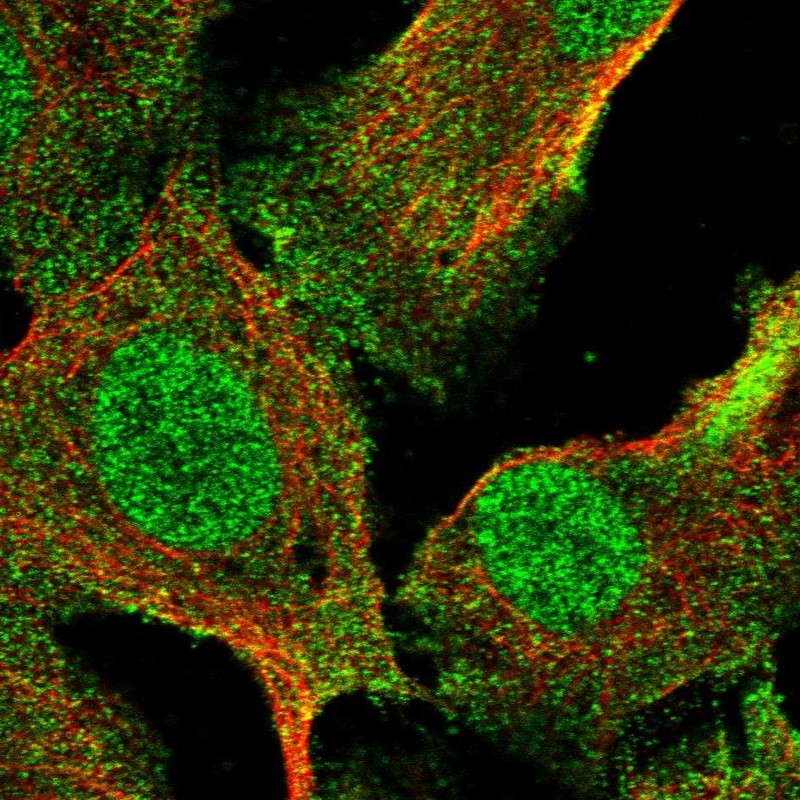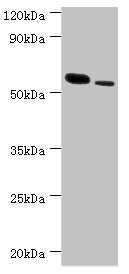anti-RNF8 antibody
ARG63564
ApplicationsFlow Cytometry, Western Blot
Product group Antibodies
TargetRNF8
Overview
- SupplierArigo Biolaboratories
- Product Nameanti-RNF8 antibody
- Delivery Days Customer23
- ApplicationsFlow Cytometry, Western Blot
- CertificationResearch Use Only
- ClonalityPolyclonal
- Concentration0.5 mg/ml
- ConjugateUnconjugated
- Gene ID9025
- Target nameRNF8
- Target descriptionring finger protein 8
- Target synonymshRNF8, E3 ubiquitin-protein ligase RNF8, C3HC4-type zinc finger protein, RING-type E3 ubiquitin transferase RNF8, UBC13/UEV-interacting ring finger protein, ring finger protein (C3HC4 type) 8, ring finger protein 8, E3 ubiquitin protein ligase
- HostGoat
- IsotypeIgG
- Scientific DescriptionThe protein encoded by this gene contains a RING finger motif and an FHA domain. This protein has been shown to interact with several class II ubiquitin-conjugating enzymes (E2), including UBE2E1/UBCH6, UBE2E2, and UBE2E3, and may act as an ubiquitin ligase (E3) in the ubiquitination of certain nuclear proteins. This protein is also known to play a role in the DNA damage response and depletion of this protein causes cell growth inhibition and cell cycle arrest. Alternative splicing results in multiple transcript variants. [provided by RefSeq, Feb 2012]
- Storage Instruction-20°C
- UNSPSC12352203







